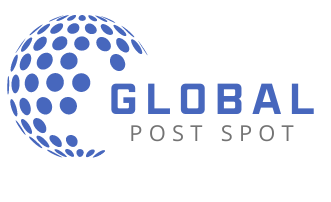In the fast-evolving world of technology, Echo Technology stands out as a revolutionary advancement with the potential to transform various industries. This blog post delves into the intricacies of Echo Technology, its applications, and its future prospects, providing a comprehensive resource for anyone interested in this cutting-edge innovation.
What is Echo Technology?
Echo Technology refers to the use of sound waves to transmit information over distances. This technology is based on the principle of echolocation, similar to how bats navigate and hunt. By emitting sound waves and analyzing the returning echoes, Echo Technology can determine the location, distance, and properties of objects.
Applications of Echo Technology:
Communication:
Echo Technology has significant applications in the field of communication. It enables the transmission of data through sound waves, providing a reliable alternative to traditional radio frequency and wireless communication methods. This technology is particularly useful in environments where electromagnetic interference is a concern.
Healthcare:
In the healthcare sector, Echo Technology is used in medical imaging techniques such as ultrasound. These techniques allow for non-invasive examination of internal organs, aiding in the diagnosis and monitoring of various medical conditions.
Navigation and Mapping:
Echo Technology plays a crucial role in navigation and mapping. It is used in sonar systems for underwater navigation, helping submarines and ships to detect obstacles and map the ocean floor. Additionally, it is used in autonomous vehicles for obstacle detection and avoidance.
Industrial Applications:
In industries, Echo Technology is employed in non-destructive testing to inspect materials for defects. It is also used in robotics for object detection and environment mapping, enhancing the capabilities of robotic systems.
Benefits of Echo Technology:
High Precision:
Echo Technology offers high precision in detecting and mapping objects, making it ideal for applications that require accurate measurements.
Non-Invasive:
One of the significant advantages of Echo Technology is its non-invasive nature. This makes it suitable for medical applications and industrial inspections where traditional methods might be damaging or impractical.
Versatility:
The versatility of Echo Technology allows it to be used across various fields, from healthcare and communication to navigation and industrial applications.
Future Prospects of Echo Technology:
The future of Echo Technology is promising, with ongoing research and development expected to expand its applications further. Innovations in this field are likely to lead to more advanced medical imaging techniques, improved navigation systems for autonomous vehicles, and new communication methods that could revolutionize how we transmit data.
Integrating Echo Technology with Other Innovations:
Echo Technology intersects with various other technological advancements, enhancing its capabilities and applications. For instance, integrating Echo Technology with Convergent Technologies can lead to more efficient data processing and analysis. Convergent Technologies combine multiple technological systems to work together seamlessly, significantly boosting the performance of Echo Technology in complex applications.
Similarly, collaborating with North Lane Technologies can provide robust infrastructure support for Echo Technology applications. North Lane Technologies focuses on developing secure and efficient technological solutions, complementing the implementation of Echo Technology in critical systems. This synergy ensures that Echo Technology operates at its highest potential, offering innovative solutions across different industries.
Challenges and Considerations:
Signal Interference:
While Echo Technology offers numerous benefits, it is not without challenges. Signal interference from other sound sources can affect the accuracy of the technology. Developing advanced algorithms to filter out noise is essential for improving reliability.
Range Limitations:
The range of Echo Technology is limited by the strength of the sound waves and the sensitivity of the detection equipment. Enhancing the range and sensitivity is a key area of research to expand the applicability of this technology.
Practical Tips for Implementing Echo Technology:
Choose the Right Equipment:
Selecting the appropriate equipment for emitting and detecting sound waves is crucial for the successful implementation of Echo Technology.
Ensure Proper Calibration:
Regular calibration of the equipment ensures accurate measurements and reliable performance.
Consider Environmental Factors:
Environmental conditions such as temperature, humidity, and background noise can affect the performance of Echo Technology. It is essential to consider these factors during implementation.
Frequently Asked Questions (FAQ)
What is Echo Technology used for?
Echo Technology is used in various applications, including communication, medical imaging, navigation, mapping, and industrial inspections. It leverages sound waves to transmit information and detect objects.
How does Echo Technology work?
Echo Technology works by emitting sound waves and analyzing the returning echoes to determine the location, distance, and properties of objects. This principle is similar to echolocation used by bats.
What are the benefits of Echo Technology?
Echo Technology offers high precision, non-invasive detection, and versatility across different fields. It is valuable in healthcare, navigation, communication, and industrial applications.
What are the challenges of using Echo Technology?
Challenges include signal interference from other sound sources and range limitations. Research is ongoing to develop advanced algorithms and enhance the range and sensitivity of Echo Technology.
How can Echo Technology be integrated with other technologies?
Echo Technology can be integrated with other technological advancements, such as Convergent Technologies for efficient data processing and analysis, and North Lane Technologies for robust infrastructure support.
Conclusion:
Echo Technology is a groundbreaking advancement with the potential to revolutionize various industries. Its applications in communication, healthcare, navigation, and industrial processes highlight its versatility and importance. As research and development continue, Echo Technology is poised to become an integral part of our technological landscape, offering innovative solutions and improving the way we interact with the world around us.



